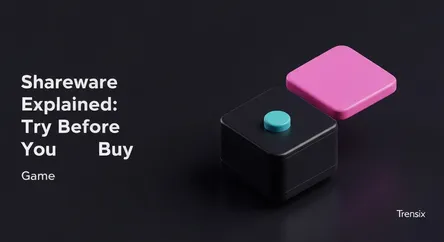Game
Shareware Explained: Try Before You Buy

Discover shareware, the 'try before you buy' software model that revolutionized game distribution and paved the way for modern demos and free-to-play games.
What is it?
Shareware is a distribution model where developers encourage users to share a program freely to try it out. Typically, this trial version is limited by time (e.g., a 30-day trial) or features (e.g., only the first level is playable). If the user enjoys the software, they are expected to pay a fee to unlock the full version. This model was highly popular in the 1980s and 90s, famously used to distribute iconic games like Doom and Wolfenstein 3D, allowing them to reach a massive audience through floppy disks and early online services.
Why is it trending?
While the term "shareware" is less common today, its philosophy is more relevant than ever. The "try before you buy" concept has evolved into modern forms that dominate gaming. Free-to-play (F2P) games, which offer a core experience for free but charge for cosmetics or advantages, are direct descendants. Similarly, game demos on platforms like Steam and Early Access programs are modern iterations of the shareware spirit. These models allow players to experience a game before fully committing, ensuring its continued relevance in digital distribution, especially for indie developers.
How does it affect people?
For gamers, the shareware model empowers them by reducing financial risk. It allows players to test a game's performance and decide if they enjoy the gameplay before spending money, creating a more informed consumer. For developers, especially independent ones, it's a powerful marketing tool. By releasing a free portion of their game, they can generate word-of-mouth buzz and build a community without a massive advertising budget. It lets the quality of the game speak for itself and attract a dedicated player base who are willing to invest in the full experience.